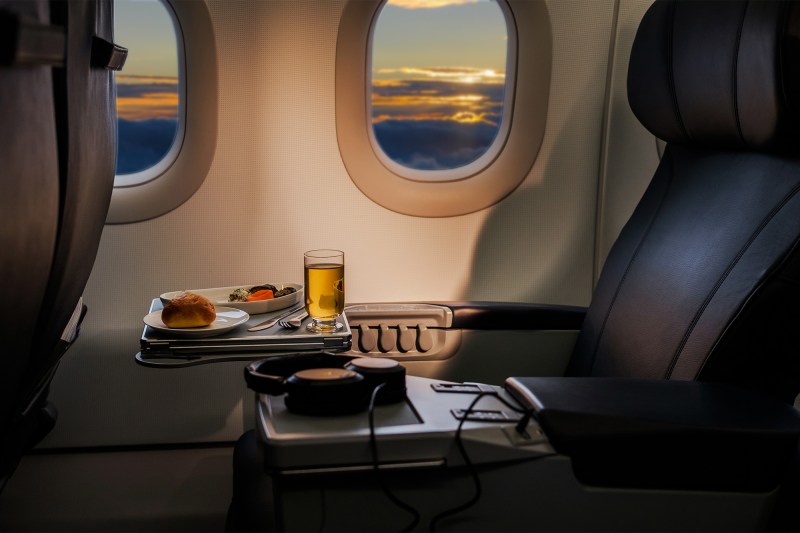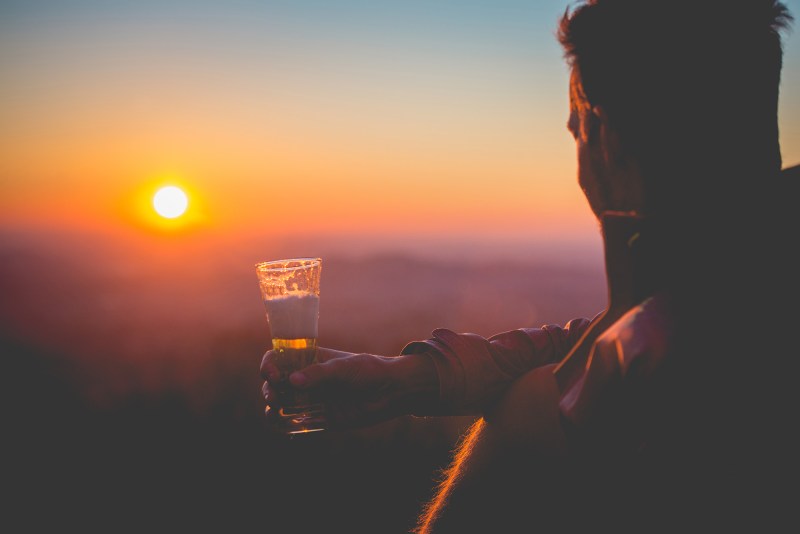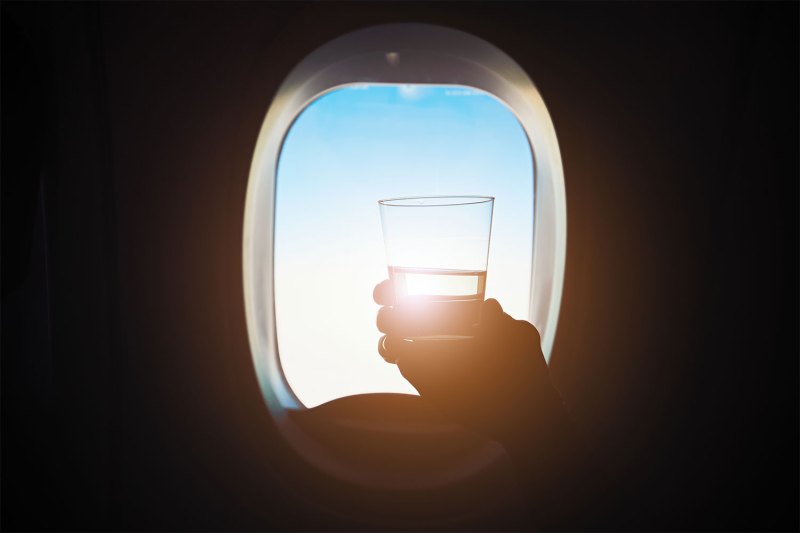
The Denver Nuggets won the NBA Finals this year and some say it’s due to an invisible factor. Yep, because the team is based in the Mile High City, the air is thinner and there’s less oxygen. So how does being at a higher altitude relate to the science of drinking?
It’s pretty common to grab an in-flight cocktail or apres ski drink way up on the slopes of your favorite mountain. And if you’ve been that person, the alcohol may have rubbed you in a different way. Here’s what happens when you engage in high-altitude drinking.

The science of high-altitude drinking
Frankly, there’s not a lot of good research out there on the topic. Back in the 1930s, freshly post-Prohibition America was thirsty again and at least a few people were asking the question. A Columbia University psychologist named R.A. McFarland looked into it, concluding roughly that at altitudes of 10,000 feet above sea level or higher, two to three drinks is more like having four to five drinks for low-altitude people.
But other studies suggest the body deals with alcohol the same, regardless of how high up one is. Researchers in alpine Europe looked into how beer was processed by the human body at sea level versus high up in the mountains at roughly 10,000 feet. The results? No difference, at least in terms of blood-alcohol content.
It’s a topic of some discussion within the aviation world. In fact, it’s easy to imagine pilots enjoying a Mai Tai pre-takeoff during the party-on-the-plane era of 1960s and 1970s. You know, the golden era of flying, when Pan-Am ran the show, people dressed to the nines (and wouldn’t even think about reaching for their Juicy-brand sweatpants) for flights, and smoked and drank excessively in the cabin. But studies in this regard, too, generally point to zero impact on the part of elevation.
Physiologically, it’s all about oxygen. Alcohol works its way through the bloodstream and tweaks hemoglobin’s ability to absorb oxygen. In the thinner air of higher locales, where there’s less oxygen present, it’s easier to feel something akin to tipsy (a little light-headed, dizzy, etc.). Alcohol’s effects aren’t magnified so much as that you’re simply imbibing in an environment with less of something you so vitally need — oxygen.
Which is to say altitude sickness exists and is thrown unfairly into the alcohol conversation. This condition is common enough that it’s estimated to affect some 200,000 Americans per year. Also called acute mountain sickness, it’s the physical distress some feel when higher, where oxygen levels are lower. Generally, symptoms include headache, nausea, and shortness of breath. Sound mostly like a hangover?
In the thinner air of higher locales, where there’s less oxygen present, it’s easier to feel something akin to tipsy.
There are simpler, oft-overlooked factors as well. If you’re drinking at altitude, you’re probably engaging in celebratory drinking and going too hard to begin with. You may be throwing a few back in your chalet’s hot tub, a scenario known to intensify the effects of dehydration. In that sense, it’s a bit like sulfites in wine in that it’s misunderstood and often blown out of proportion. So, to the vacationer on the international flight claiming to be feeling more buzzed than usual — it’s because you’re pounding free alcohol in excited, pre-vacation fashion.
The more interesting related story here is tolerance and acclimation. Humans are pretty good adaptors and show it in all kinds of ways. That first February cocktail probably hit a little harder after Dry January, as your body hadn’t dealt with alcohol for some time. You may be sucking wind for your first week of jogs in and around the Grand Canyon, where elevations often crest 8,000 feet.
So, while drinking more often will certainly better equip you for staying relatively sane during any upcoming celebrations, drinking on a mountaintop won’t help your cause. And if you suffer from altitude sickness, that sort of regimen will definitely backfire.
Similarly, if you’re looking to experience an emerging wine scene in, say, Bolivia, some pre-trip training might be in order. The vineyards in the landlocked South American country are believed to be some of the highest on the planet, set well above the mile-high mark. A few hilly hikes beforehand might allow your body to better adjust physiologically upon arrival.
While it’s exciting to think you’ll save a little dough boozing at altitude, there’s very little to back up that claim. But don’t let that ruin your next snowy party or high desert cookout. Just know that good ol’ reliable alcohol performs pretty much the same across the elevation board.

Tips for in-flight drinking
If you do decide to imbibe on a flight, there are some helpful tricks to keep in mind. Reza Zadeh is a drinks expert at Drinks House 247 in the U.K. Zadeh said some
“The interplay of the airplane’s low humidity and cabin pressure enhances the flavors of the tomato juice, lending it a sweeter taste, despite the presence of salt and olives in the cocktail,” Zadeh said. What else? Wine spritzer, Mimosas, and Moscow Mules.
“The vigorous, effervescent ginger beer may aid in alleviating queasiness, while the lime provides a beneficial surge of vitamin C,” Zadeh said of the Moscow Mule.
Now, airlines don’t always have the best booze to work with. That doesn’t mean you have to suffer through a subpar cocktail. Renowned drinks guru and bartender Jeffrey Morgenthaler offered some suggestions in his latest book, Drinking Distilled.
Specifically, the author suggested making your own kit to carry on to the plane. All you need is a pair of honey sticks for sweetness and droppers filled with your favorite bitters (TSA-approved as the volume is so low). On the plane, he said to order a Scotch. But first, order a water (“you are going to want it for hydration anyway but you also need the spare cup,” he wrote). Add a few dashes of bitters and a honey stick into the cup along with the Scotch, stir, and enjoy. Consider it an improved Old Fashioned.
“Voila, a fancy cocktail at 30,000 feet,” Morgenthaler wrote. “And you didn’t even have to break the law in order to do it.”


